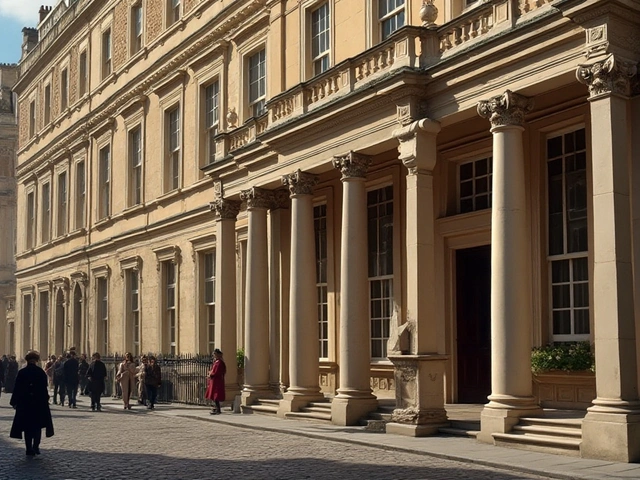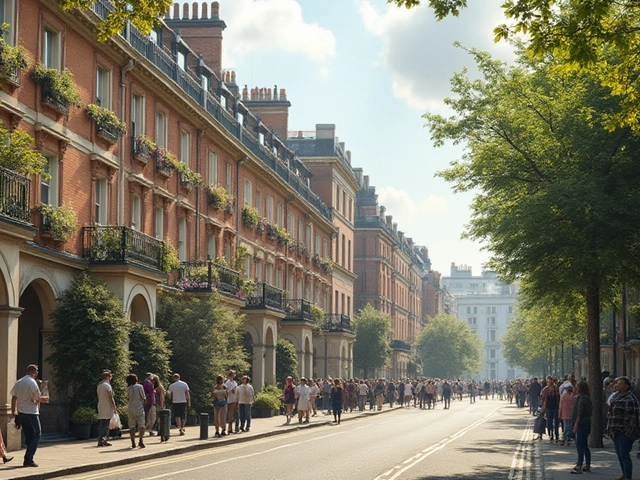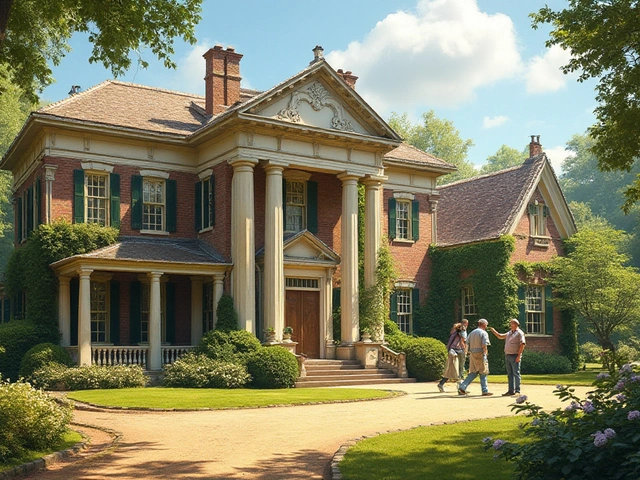Imagine walking up to an old government building, its columns straight-backed and proud. Ever wondered why so many grand-city centers have that same imposing look, even halfway across the world from where the style began? Colonial architecture is everywhere: postcard-perfect facades in Havana, old bishops’ palaces in Goa, grand terraces in Melbourne. But peel back the paint, and you’ll find the real story—one that’s tangled up in trade, conquest, craftsmanship, and the messy, brilliant way humans blend cultures through art and stone.
The Roots of Colonial Architecture
Colonial architecture kicked off when explorers, traders, and conquerors carried their own building traditions to new places. As empires expanded from Europe in the 16th to 19th centuries, settlers wanted homes and public buildings that felt familiar—except they didn’t have the same climate, materials, or labor. So British, Spanish, French, Dutch, and Portuguese colonizers started mixing their own styles with local influences. Think about the British Queen Anne townhouses in Kolkata with wide verandas, or the red-bricked churches of Macau blending Portuguese and Chinese features. It was never just a one-way street—local artisans got involved, tweaking imported plans to suit local needs. That’s how you ended up with Gothic arches made from coral stone in Zanzibar, or French-style townhouses with intricate Moroccan tilework.
Even the word “colonial” tells a story: colonies were supposed to help the mother country, but architecture did its own thing, picking up flavors from wherever the wind blew. The frontages of colonial houses in the Caribbean borrowed from West African courtyard styles. In Manila, clay-tiled rooflines kept things cool, echoing Chinese and local Filipino methods. The architecture was constantly evolving, mixing old-country grandeur with everyday survival in strange new worlds.
Diving Into Design: Features and Adaptations Worldwide
So what actually makes a building “colonial”? Think symmetry: central doors, balanced windows, wide eaves. Those are the hallmarks, but they’re just the beginning. Early British colonies went big on red brick and white trim, inspired by Georgian manors. Spanish colonies loved arcades (covered walkways), thick adobe walls, and inner courtyards for keeping cool. In French outposts, like New Orleans or Pondicherry, you’ll spot those delicate ironwork balconies and pastel coloring. Portuguese colonial buildings leaned toward azulejos—glossy blue-and-white tiles—married to bold columns and painted plaster.
Editions and adaptations were the norm. Climate was a big driver. In the tropics, architects stretched the rooflines and introduced shaded verandahs (like those all across Queensland, Australia). In the Americas, thick stone or brick kept interiors cool during scorching days. Window shutters and high ceilings were more than decoration—they let air circulate or held back storms. Even tiny flourishes, like latticework or filigree iron, had a job: blocking sun and prying eyes, yes, but also acting as makeshift filters for intense rain.
Here’s a quick look at some instantly recognizable features across continents:
- Courtyards—Spanish and Portuguese colonies often wrapped houses around a bright, private courtyard.
- Chimneys and Fireplaces—Crucial in North American and South African outposts for cold winters.
- Colonnades, Arches, and Pediments—Borrowed from the classical vocab but always with a twist for local materials.
- Verandahs and Balconies—Almost everywhere, because they work in hot, rainy, or humid spots.
- Thick Walls, Small Windows—Essential for insulation in harsh climates, from India to Mexico.
And don’t think colonial buildings were always grand palaces. Many were highly functional, like trading warehouses, simple chapels, or tiny wood cottages. You can spot the signatures everywhere once you know what to look for.
Culture Collides with Construction
Colonial buildings aren’t just about bricks and whitewash. They’re snapshots of cultural exchange—sometimes peaceful, often uneasy, but always complicated. When settlers commissioned buildings in far-off places, they depended on local labor. Sometimes, imported architects would draw up plans, but local builders would say, “No way, that’ll never work with our weather or our stone.” The result? Hybrid masterpieces that sometimes outlast both original and settler traditions.
Take the Dutch buildings of Jakarta: classic stepped gables up top, but resting on thick, locally hewn timbers to stand up to Indonesian humidity. Head to Haiti, and you’ll see old French mansions reimagined with hurricane-resistant walls, shaded double verandahs, and bright local colors. In South Africa, Dutch Cape architecture folds in Malay and African details: whitewashed farmsteads with flowing gables, but also thatched roofs and outdoor kitchens adapted for local cuisine.
Here in Australia, colonial Georgian and Victorian terraces are everywhere in city neighborhoods like Fitzroy, Sydney’s Surry Hills, or Adelaide’s North Terrace. At first glance, these rows seem like they were plucked out of London. But the thick stone walls came from regional quarries, the wide verandas were needed for harsh Aussie sun, and ornate cast-iron lacework picked up ideas from global trade. Local Indigenous stonework techniques and motifs sometimes sneak into the decorative details, too, especially when you start poking around old homesteads or government offices.
What’s wild is how these buildings record power shifts—sometimes literally, as old town halls turn into museums or trendy hotels. They provoke strong feelings: pride, nostalgia, or even protest (because, let’s be honest, colonial expansion stomped on plenty of existing cultures). Restoration debates can get heated. Should we “preserve” the architecture as a reminder of complicated histories, or renovate and reuse, giving them new life?
When Art and Architecture Meet: Beauty in the Details
It’s easy to focus on big-picture features—arches, columns, courtyards—but colonial architecture lives in its details. Art traveled with soldiers, missionaries, and bureaucrats, but was never unchanged. Tiles, carvings, frescos, and stained glass—nothing was immune from local flavor. Viceroy’s palaces in India borrowed Mughal motifs; bell towers in Peru got fanciful statues inspired by Amazonian myths.
Churches were often the canvas for wild experimentation. Jesuit missions in South America fused Spanish Baroque altar screens with Incan goldwork and indigenous patterns painted onto ceilings. Churches in the Philippines dripped with woodcarvings crafted by Chinese artisans, with dragons and clouds hiding behind classic European saints. In the Caribbean, you might find painted ceilings bright with local birds and flowers—not exactly what the architects back in Spain had in mind.
Towns and cities also began to organize themselves around colonial architecture—not just a matter of making pretty streets but of control and symbolism. Grand squares with government buildings at the center, shining white churches on the corners, rows of merchants’ houses—all these mapped a new order onto the land. The buildings themselves became tools of art and message, announcing, “This place belongs to us now.” But quite often, everyday folks and local craft traditions turned those places into something richer, sneaking in colors, shapes, and even hidden jokes that only locals would spot.
Let’s not forget the obsession with symmetry—sometimes imposed, sometimes faked. Fake window shutters (because you couldn’t drill through a stone wall), plaster moldings painted to look like marble, and tall, narrow doorways telling you that scale in architecture could bend to drama or necessity depending on the builder’s budget.
| Colonial Style | Key Regions | Main Features | Famous Examples |
|---|---|---|---|
| British Colonial | Australia, India, Caribbean, USA | Symmetry, sash windows, verandahs, pitched roofs | Sydney’s Georgian terraces, Kolkata’s Writers’ Building |
| Spanish Colonial | Latin America, Philippines | Patios, thick walls, red-tiled roofs, arcades | Havana’s Cathedral, Lima’s Plaza Mayor buildings |
| French Colonial | Louisiana, Vietnam, West Africa | Ironwork balconies, high ceilings, pastel colors | New Orleans’ French Quarter houses |
| Portuguese Colonial | Brazil, Goa, Macau, Mozambique | Azulejo tiles, loggias, ornate stonework | Goa’s Se Cathedral, Salvador’s Pelourinho Square |
| Dutch Colonial | Indonesia, South Africa | Stepped gables, thick walls, large doors | Cape Town’s Groot Constantia, Jakarta’s Stadhuis |
Preserving and Repurposing Colonial Heritage Today
Old colonial buildings are both history books and battlegrounds for memory. Some once grand courthouses or trading companies now house libraries, luxury hotels, or government offices. But deciding what survives—and how to tell its story—is never simple. There’s a real trend now toward restoring colonial buildings instead of knocking them down; in Melbourne, for example, the Block Arcade and the Royal Exhibition Building attract tourists and locals alike, showing off how these spaces can have second (or third) lives.
Preserving these buildings isn’t only about looks. It’s about climate resilience, too. Those thick walls and clever windows were early forms of sustainable design—no air-conditioning required if you get the basic choices right. Some cities run heritage walks or open-house days for people to see restoration up close (have you toured through Fitzroy’s hidden courtyards? Worth checking out). Architects tasked with adaptive reuse projects often split the difference between saving original materials and slipping in modern utilities—sometimes with oddly beautiful results. A sleek glass elevator inside a 200-year-old sandstone shell? It’s happening worldwide.
There are cautionary tales, though. Developers sometimes gut all the old charm, pasting on a “colonial” shell to boost real estate prices. Or, the opposite: leaving important buildings to rot because their history is too contentious. But the best projects show respect for the past without freezing it in amber. In Goa, homeowners have revived crumbling Portuguese mansions, filling them with Indian art and running them as guesthouses. In Australia, locals fight hard to keep historic terraces from being bulldozed for apartments, knowing the city’s story is written in their walls. Real estate data shows heritage houses here can boost local property values by 10-15%. That’s proof people value living with history, not just looking at it.
Tip for explorers: always stop for a guided tour inside any well-restored colonial building. The stories behind the ironwork, hallway tiles, or even hidden cellars tell you more than any textbook can.




